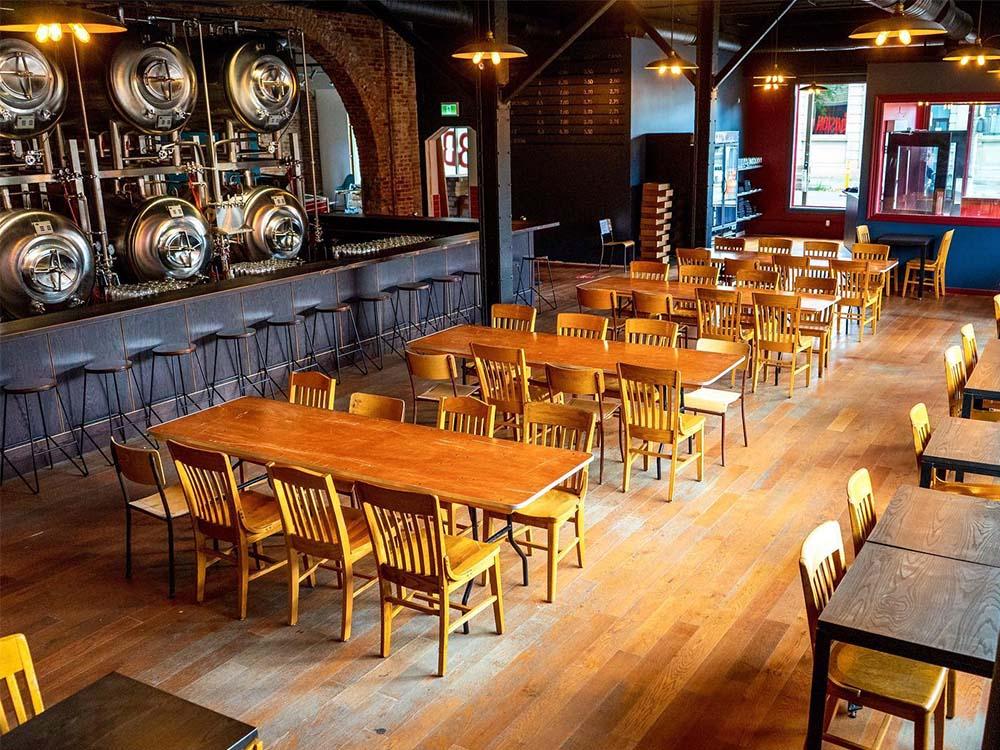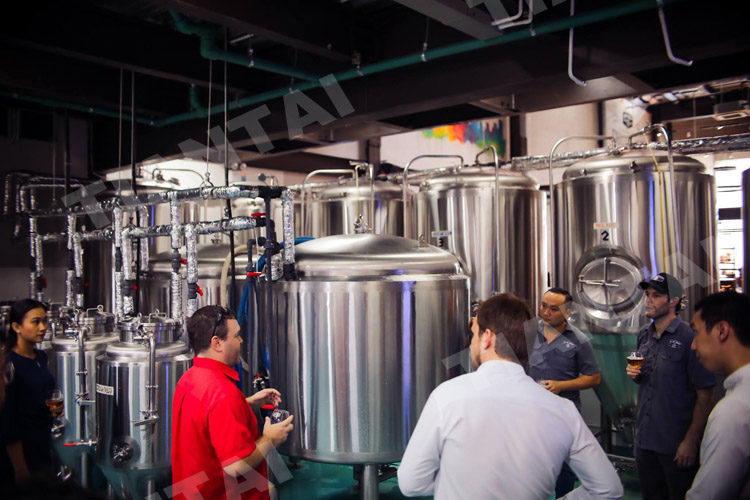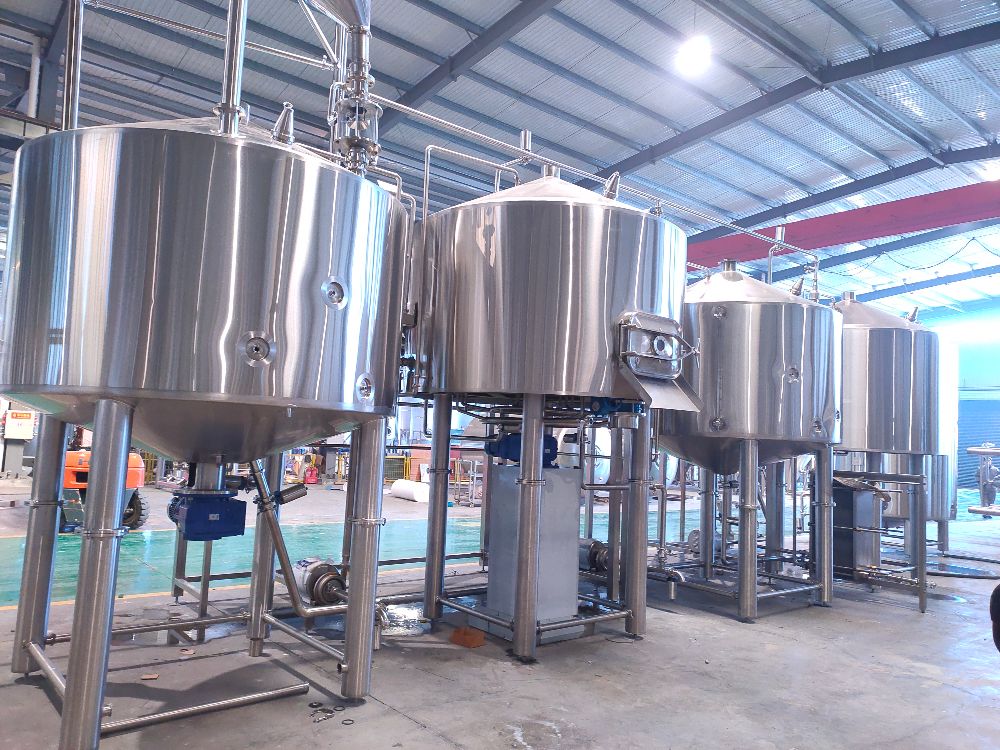What is effect of yeast autolysis in craft beer fermenting process
- Oct 08, 2023
- 87
- tiantai
In last article, we discussed the possible reason of yeast autolysis happened in beer fermenters. In this article, let’s discuss the effect of yeast autolysis in craft beer fermenting process.
Yeast autolysis in the craft beer fermentation process can have both positive and negative effects, depending on how it's managed and controlled. Here are the main effects of yeast autolysis in craft beer fermentation:

Positive Effects:
Flavor Complexity: Controlled autolysis can contribute to the development of flavor complexity in beer. During autolysis, yeast cells release various compounds, including amino acids and lipids, which can add to the overall flavor profile. This can result in subtle, desirable characteristics like a creamy mouthfeel, nutty or toasty notes, and increased depth of flavor.
Improved Mouthfeel: Yeast autolysis can release mannoproteins, which can enhance the beer's body and mouthfeel, making it feel smoother and more full-bodied.
Aging Potential: Some beer styles, particularly strong ales and barrel-aged beers, benefit from a certain amount of yeast autolysis during aging. It can help these beers develop more complex and mature flavors over time.
Negative Effects:
Off-Flavors: Uncontrolled or excessive autolysis can result in off-flavors, often described as "yeasty," "rubbery," or "meaty." These off-flavors can be undesirable and can negatively impact the beer's quality.
Cloudiness: Autolysis can lead to increased turbidity (cloudiness) in the beer due to the release of cell debris and compounds. While a hazy appearance is acceptable or even desirable in some beer styles, excessive cloudiness can be a problem.
Bottle Conditioning Challenges: For bottle-conditioned beers, autolysis can become problematic if the yeast cells in the bottle die and break down prematurely. This can lead to overcarbonation, undercarbonation, or inconsistency in carbonation levels between bottles.
To control yeast autolysis in craft beer fermentation, brewers typically take several precautions:
Healthy Yeast Management: Ensuring that the yeast used is healthy and free from stress is crucial. Stressed yeast is more likely to undergo autolysis.
Proper Pitching and Fermentation: Maintaining proper pitching rates, temperature control, and fermentation conditions helps prevent premature yeast autolysis.
Prompt Racking: Transferring the beer off the yeast cake (racking) once fermentation is complete helps reduce the risk of autolysis. Some brewers may employ multiple racking steps during the brewing process.
Time and Temperature Control: Limiting the time yeast spends in contact with the beer and controlling temperature are essential for avoiding excessive autolysis.
Use of Secondary Fermentation Vessels: Many brewers use secondary fermentation vessels to separate the beer from the yeast cake, minimizing autolysis.
In summary, yeast autolysis in craft beer fermentation can have both positive and negative effects. Proper management and control of the process are essential to ensure that the positive effects contribute to the beer's complexity and character, while the negative effects are minimized or avoided.
We provide complete brewery system from 50L-100HL. Welcome contact Nicole now to discuss further and customize your beer brewing equipment and beer fermenter to start your production trip. Cheers!
Edited by Nicole
Sales manager | Tiantai beer equipment
Email: [email protected]
Yeast autolysis in the craft beer fermentation process can have both positive and negative effects, depending on how it's managed and controlled. Here are the main effects of yeast autolysis in craft beer fermentation:

Positive Effects:
Flavor Complexity: Controlled autolysis can contribute to the development of flavor complexity in beer. During autolysis, yeast cells release various compounds, including amino acids and lipids, which can add to the overall flavor profile. This can result in subtle, desirable characteristics like a creamy mouthfeel, nutty or toasty notes, and increased depth of flavor.
Improved Mouthfeel: Yeast autolysis can release mannoproteins, which can enhance the beer's body and mouthfeel, making it feel smoother and more full-bodied.
Aging Potential: Some beer styles, particularly strong ales and barrel-aged beers, benefit from a certain amount of yeast autolysis during aging. It can help these beers develop more complex and mature flavors over time.
Negative Effects:
Off-Flavors: Uncontrolled or excessive autolysis can result in off-flavors, often described as "yeasty," "rubbery," or "meaty." These off-flavors can be undesirable and can negatively impact the beer's quality.
Cloudiness: Autolysis can lead to increased turbidity (cloudiness) in the beer due to the release of cell debris and compounds. While a hazy appearance is acceptable or even desirable in some beer styles, excessive cloudiness can be a problem.
Bottle Conditioning Challenges: For bottle-conditioned beers, autolysis can become problematic if the yeast cells in the bottle die and break down prematurely. This can lead to overcarbonation, undercarbonation, or inconsistency in carbonation levels between bottles.
To control yeast autolysis in craft beer fermentation, brewers typically take several precautions:
Healthy Yeast Management: Ensuring that the yeast used is healthy and free from stress is crucial. Stressed yeast is more likely to undergo autolysis.
Proper Pitching and Fermentation: Maintaining proper pitching rates, temperature control, and fermentation conditions helps prevent premature yeast autolysis.
Prompt Racking: Transferring the beer off the yeast cake (racking) once fermentation is complete helps reduce the risk of autolysis. Some brewers may employ multiple racking steps during the brewing process.
Time and Temperature Control: Limiting the time yeast spends in contact with the beer and controlling temperature are essential for avoiding excessive autolysis.
Use of Secondary Fermentation Vessels: Many brewers use secondary fermentation vessels to separate the beer from the yeast cake, minimizing autolysis.
In summary, yeast autolysis in craft beer fermentation can have both positive and negative effects. Proper management and control of the process are essential to ensure that the positive effects contribute to the beer's complexity and character, while the negative effects are minimized or avoided.
We provide complete brewery system from 50L-100HL. Welcome contact Nicole now to discuss further and customize your beer brewing equipment and beer fermenter to start your production trip. Cheers!
Edited by Nicole
Sales manager | Tiantai beer equipment
Email: [email protected]




.jpg)